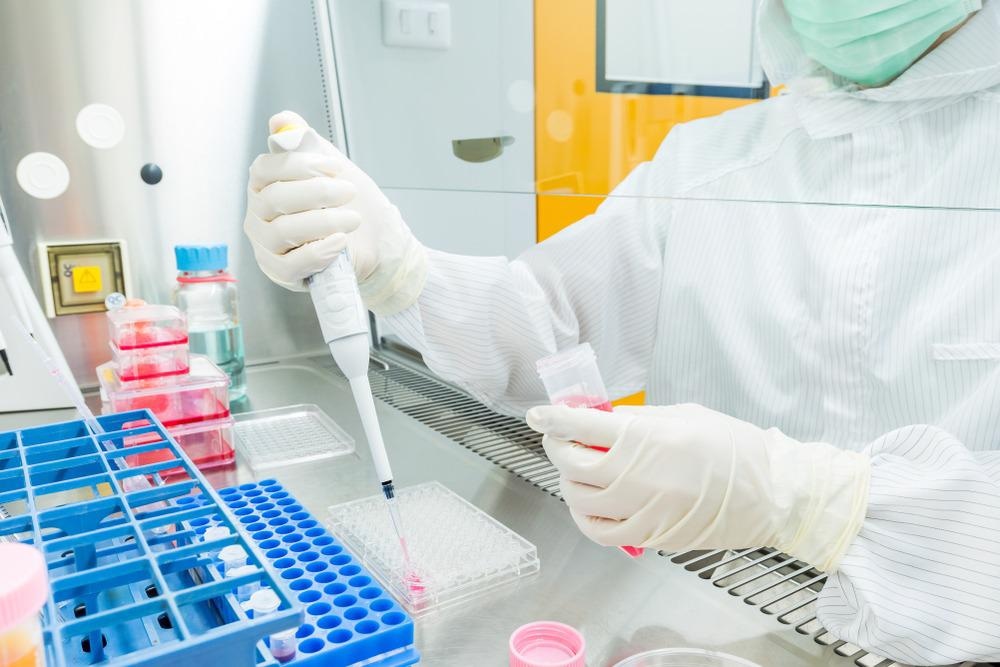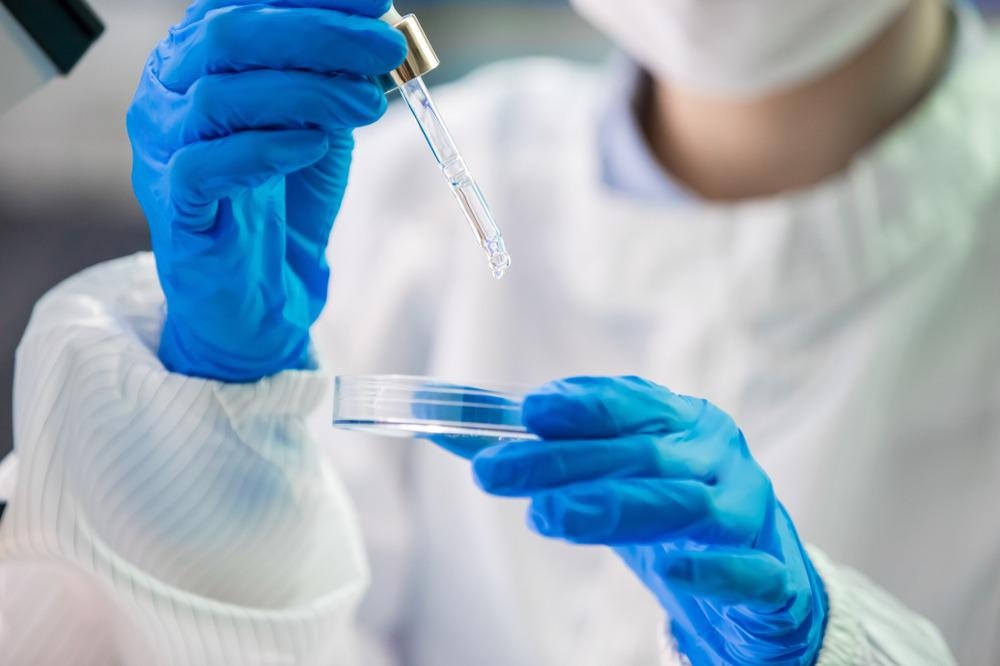A Clean Room, or cleanroom, is a laboratory environment that ensures that airborne particles are maintained at a very low concentration. This room is isolated, actively cleansed, and prevented from contamination from a range of particles and biological material including dust, airborne organisms, or vaporized particles. These rooms are necessary to protect human health and industrial product assembly, and their primary aim is to prevent the release of whatever particle is being handled inside it. They are highly specific environments as several parameters are controlled.

A cleanroom. Image Credit: warut pothikit/Shutterstock.com
The international organization for standardization (ISO) is a worldwide federation comprised of several national standard bodies that were created to set standards for similar technologies in different countries. In the context of cleanrooms, standards and grading have been developed to assess the air quality and cleanliness.
International standards for monitoring airborne particles in cleanrooms
In Federal Standard 209 (A to D) of the USA, the number of particles ≥0.5mm is measured in one cubic foot of air, and this count is used to classify the cleanroom. The Federal Standard 209Ewas the preliminary standard for the classification of clean zones and cleanrooms; however, a new global standard replaced this in 1999 (ISO 14644-1).
Satisfactory cleanroom air quality is essential to ensure the quality of the product being produced or the effectiveness of the process being performed in the cleanroom. To determine whether the cleanroom complies with the global standard, some form of airborne sampling is necessary.
It is important to note that there is frequent variability in readings of airborne particles in cleanrooms due to the contributions of dynamic particulate levels, variability in sampling technique, and differences or inconsistencies between the calibration and maintenance of instruments. However, ISO classification offers a complete platform to control for the discrepancy between different instruments.
An ISO 14644-1 classified cleanroom is a room or contained environment where it is crucial to keep particle counts low. ISO 14644-1 cleanrooms are classified from ISO 1 to ISO 9. Each cleanroom is classified according to the maximum concentration of particles per cubic meter or cubic foot. ISO 8 is the second lowest cleanroom classification and is considered to be the least clean cleanroom classification.
ISO 14644-1 classification is as follows:
|
Class
|
Maximum particles/m3
|
FED STD 209E equivalent
|
|
≥0.1μm
|
≥0.2μm
|
≥0.3μm
|
≥0.5μm
|
≥1μm
|
≥5μm
|
|
|
ISO 1 (cleanest)
|
10
|
2
|
|
|
|
|
|
|
ISO 2
|
100
|
24
|
10
|
4
|
|
|
|
|
ISO 3
|
1000
|
237
|
102
|
35
|
8
|
|
Class 1
|
|
ISO 4
|
10000
|
2370
|
1020
|
352
|
83
|
|
Class 10
|
|
ISO 5
|
100000
|
23700
|
10200
|
3520
|
832
|
29
|
Class 100
|
|
ISO 6
|
1000000
|
237000
|
102000
|
35200
|
8320
|
293
|
Class 1000
|
|
ISO 7
|
|
|
|
352000
|
83200
|
2930
|
Class 10000
|
|
ISO 8
|
|
|
|
3520000
|
832000
|
29300
|
Class 100000
|
|
ISO 9
|
|
|
|
35200000
|
8320000
|
293000
|
Room Air
|
For comparison, a typical office space would be considered to be between 5 to 10 times more dirty relative to the ISO 8 standard.

Cleanroom use. Image Credit: aslysun/Shutterstock.com
When Is a Cleanroom Required?
A cleanroom can be used for several applications across several industries. They are necessary for applications for which sterile and clean environments are necessary. With regards to the life sciences setting in which production is occurring, the safety and quality of products is the primary objective. If too many particles enter the cleanroom raw materials, manufacturing processes, and finished products can be adversely affected.
An ISO 1 cleanroom classification is rare and is only implemented in cases of the most sensitive research and development processes is, for instance, those involving the construction of semiconductors or bioscience. An ISO 5 cleanroom is considered to be a high-grade cleanroom and is necessary for pharmaceutical applications. This may include the sterile filling of pharmaceutical drugs into their respective packaging. An ISO 7 facility is necessary for sub-sterile applications.
An ISO class 8 cleanroom is the lowest acceptable level for sterility. It is used when sterility is not considered to be the primary objective, but it is necessary to ensure a basic level of hygiene. Examples of such applications include the storage of pharmaceuticals.
It is important to note that these examples are indicative of these standard applications in practice. The standards are often set by a combination of several factors, which depend on the application of the cleanroom. Some applications may therefore fall somewhere between the levels indicated in the standards.
Cleanrooms ensure:
- Maintenance of effective contamination control measures and their assessments
- Identification of specific threats to product purity.
- Informing on the performance of heating, ventilation, and air conditioning systems, cleanliness of personnel, gowning practices, equipment, and cleaning operations
- Protection of the end-user (patients and healthcare providers) by protecting against biological contamination.
- Protection of the workforce: some raw materials in product manufacture can produce contaminants that could be hazardous to operators. Cleanrooms ensure the immediate safety of the environment for Personnel in the cleanroom through the use of drowning areas, protective equipment, and air filtration systems.
- Secure product or process certification: successfully and globally marketed products ranging from medical devices to pharmaceuticals require the manufacture to occur in a cleanroom that meets all parameters of international standards where the device is to be sold. By implementing these international standards, manufacturers can market to a larger customer base and therefore increase their product profitability.
Requirements For Setting Up a Cleanroom
It is the responsibility of the manufacturers and research labs to meet minimum requirements and standards that apply in their geographical region.
Manufacturers and research laboratories must remain vigilant to changes to the international standards and be able to respond to them appropriately. There are a comprehensive set of requirements and regulations that have been described in documentation. The most common/ ubiquitous of these include:
- Cleanroom air monitoring system: as air quality is a critical determinant of cleanliness and air quality, enabling particle thresholds and therefore regulations to be adhered to.
- Continuous testing for contaminant particles: the average person in a cleanroom can add 100,000 0.3 microparticles per minute while in a standing position. Mitigating the risk generated as a result of particle production begins with testing such particles to determine strategies to prevent the build-up of excess particulates. The choice of filtration systems is dependent on the type of work, the personnel, and the quantities of particles generated in the cleanroom workspace.
- Written procedures: To prevent harm to the users of any products generated in a cleanroom, contamination prevention measures need to be documented and submitted to the appropriate regulatory agency. Regulators require documentation as proof of preventative contamination strategies applied to both the product itself and the process used to generate it.
The development of more complex products, including device miniaturization under nanotechnologies will increasingly present new challenges for cleanroom manufacturers. It is believed that automation will be used to leverage manufacturing, with the early implementation of automation in the assembly process enabling a low-cost means of ensuring cleanliness. It is also believed that artificial intelligence and machine learning can increase quality standards and reliability.
References
Last Updated: Jan 31, 2022